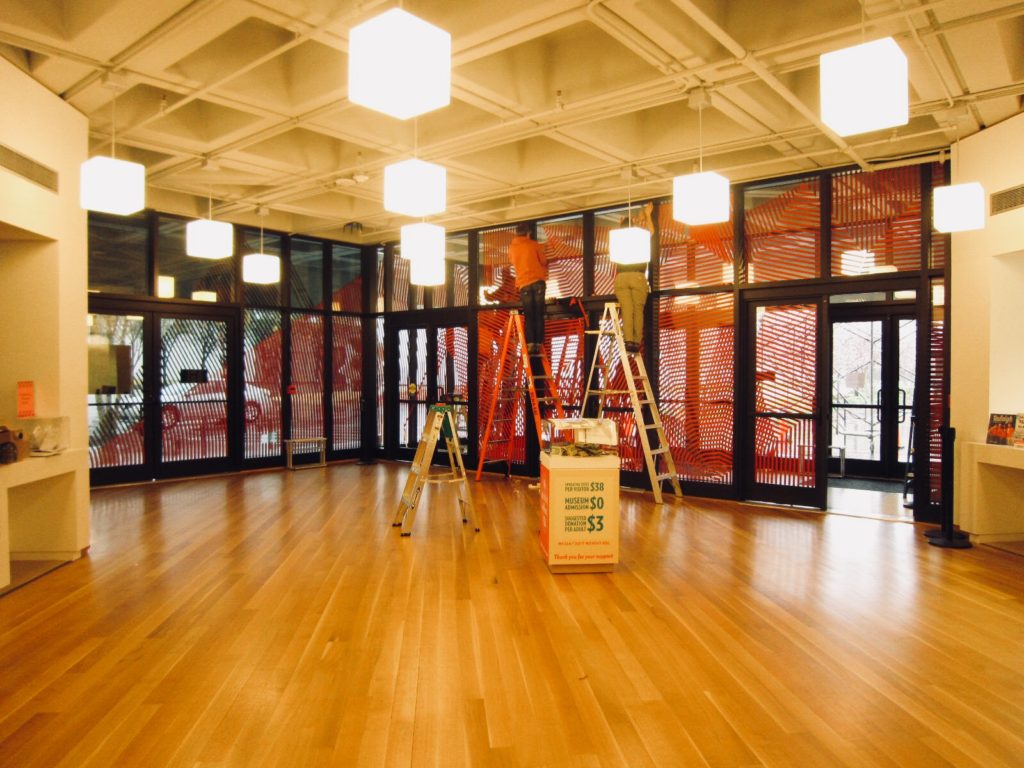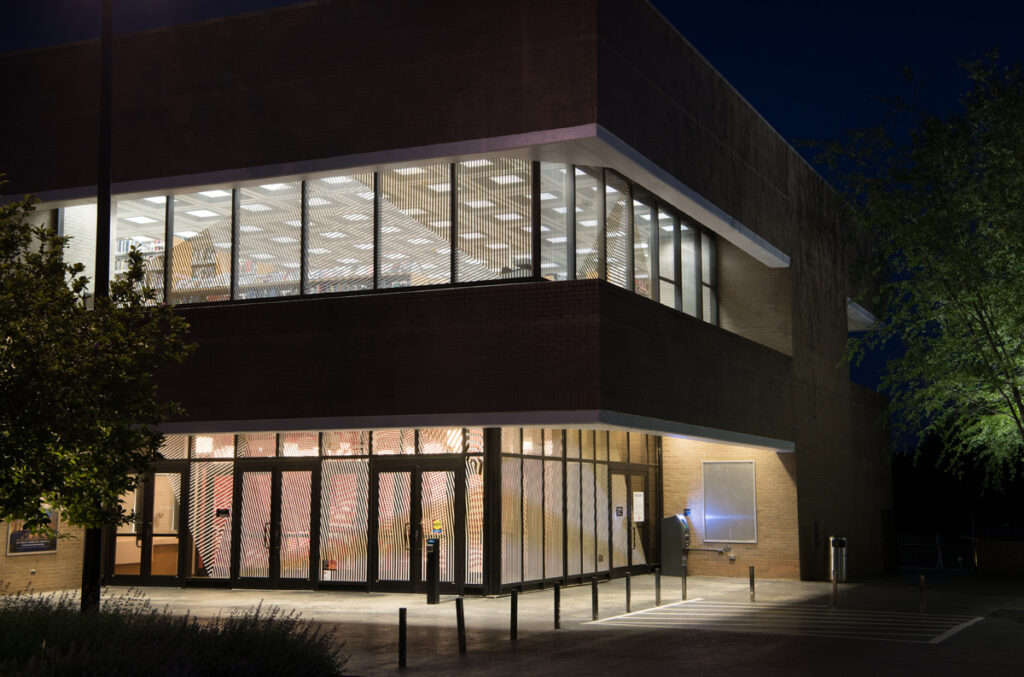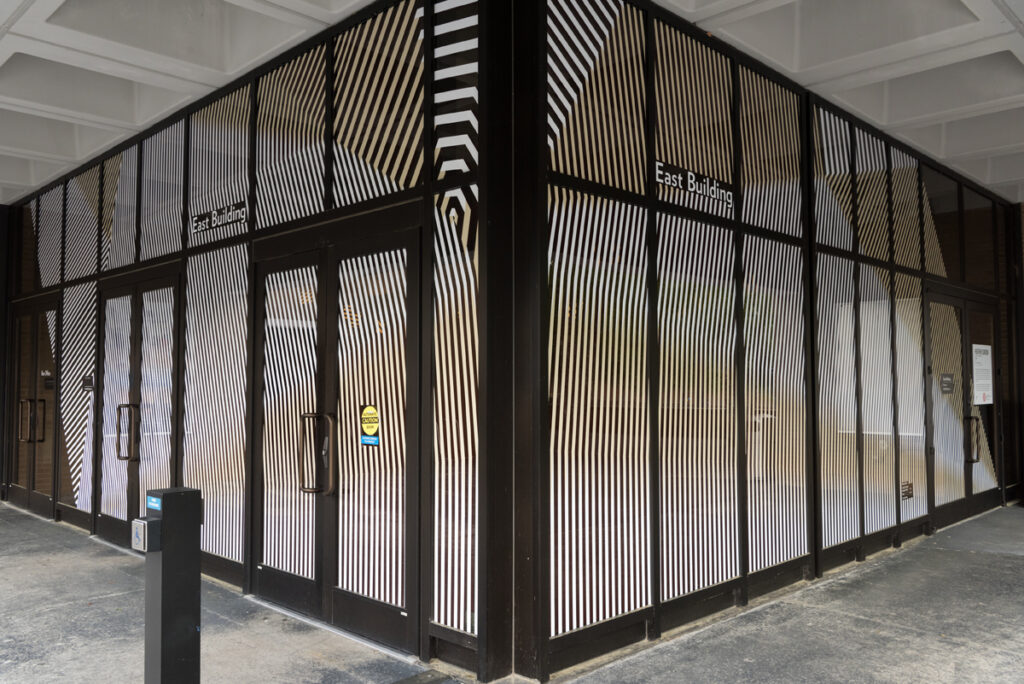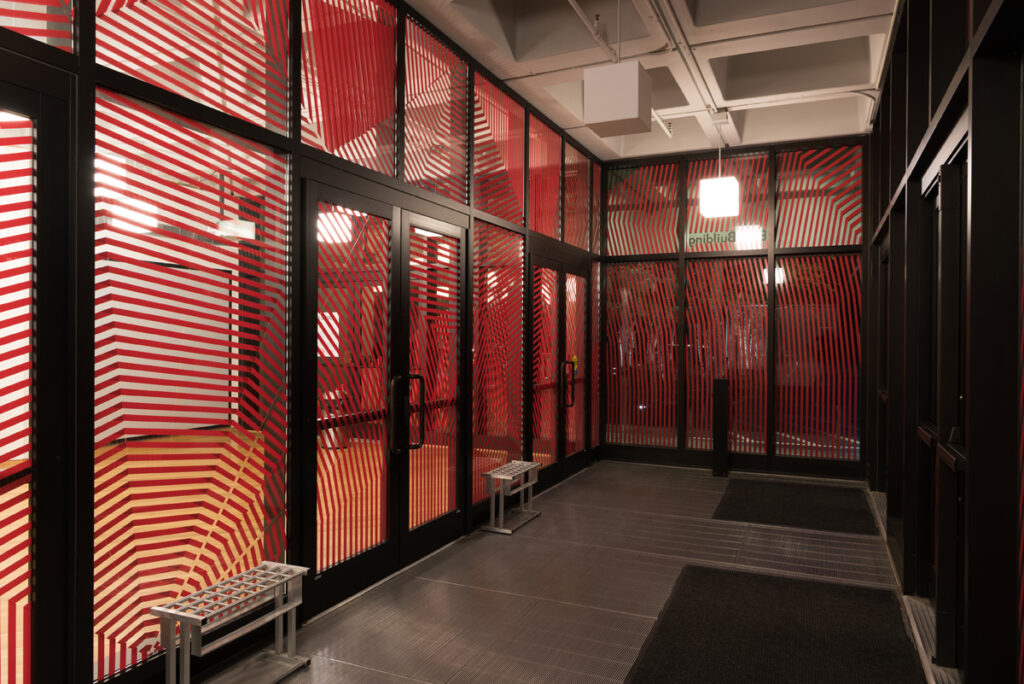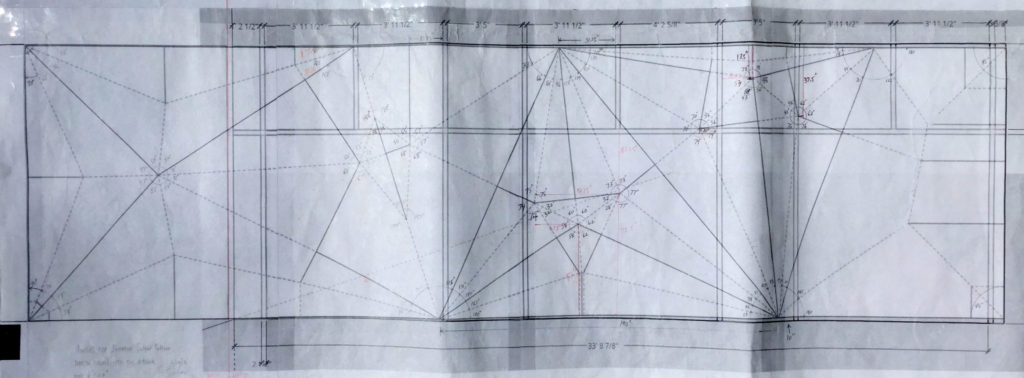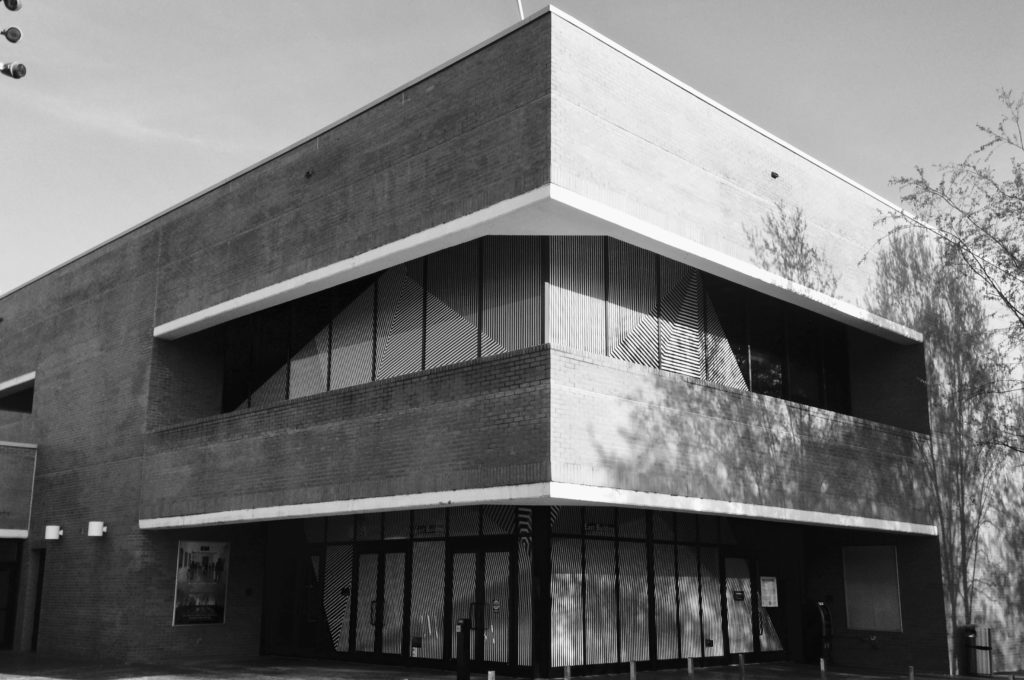
CINNABAR is part of You Are Here: Light, Color, and Sound Experiences
at the NC Museum of Art, Raleigh, NC (2018)
April 7 – July 22
Artist Talk on June 14, 6:30p
Please visit the NCMA website for a full listing of events.
PROJECT DESCRIPTION
CINNABAR is an immersive installation named for the ore (mercury sulfide) from which we refine elemental Mercury. It is the crystalline form of the combination of mercury and sulfur. [more]
My goal with CINNABAR is to express something about the three principles of alchemy (the Great Work) which include Sulfur, Mercury, and Salt. In its simplest terms, alchemy, as a discipline, seeks to explain philosophical concepts through the study of chemical processes. Historical discussion and experimentation with these three principles tells a story of how Sulfur (idea) lends shape to the fluid metal Mercury (material) to create Salt, otherwise known as Rebis. Salt is a symbol of the reconciliation of soul and matter, and finds embodiment in a being who has balanced these conflicting opposites.
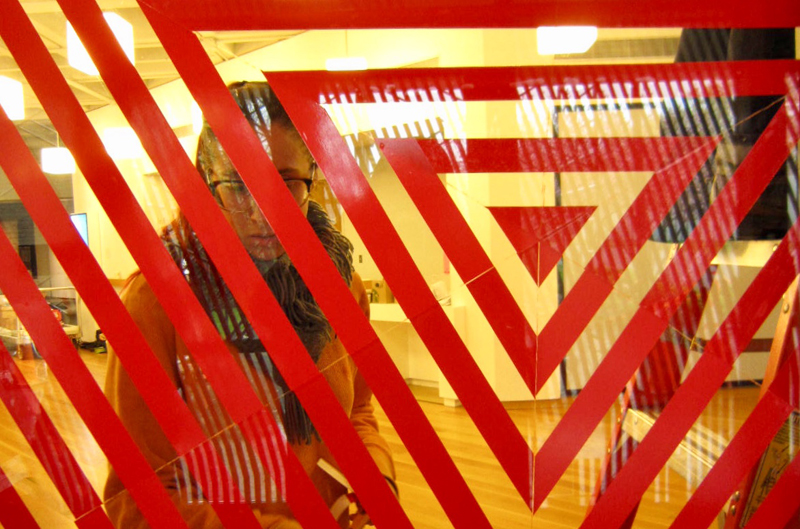
My interest here is in the transformative moments of self that can occur when encountering the stuff of the world so much of which causes cognitive dissonance and internal/external conflicts of all sorts.
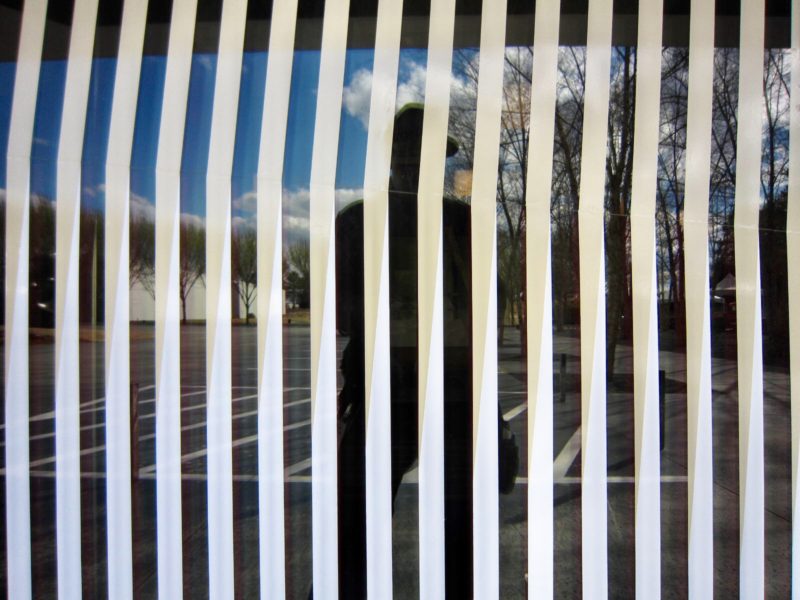
CINNABAR is situated in the entry of the East Bldg of the NC Museum of Art, the opener for the You Are Here exhibition. The exterior glass design is based on an origami pattern mapping the atomic properties of Mercury (the stuff of the world) taped out in 1” white and sand vinyl tape on the entry doors and the upper level library windows.

photo credit: Sydney Steen
Once inside the entry vestibule, the visitor meets the interior taped pattern for Sulfur wrapping floor to ceiling in red on the glass. Through the glass, and inside of the museum itself, there is a 9’ square projection of salt dancing on a dark surface, creating curvilinear geometric patterns caused by the interaction of sound frequencies on a metal plate (the famous Chladni experiment) (collaborator and videographer, Alex Maness pictured below).
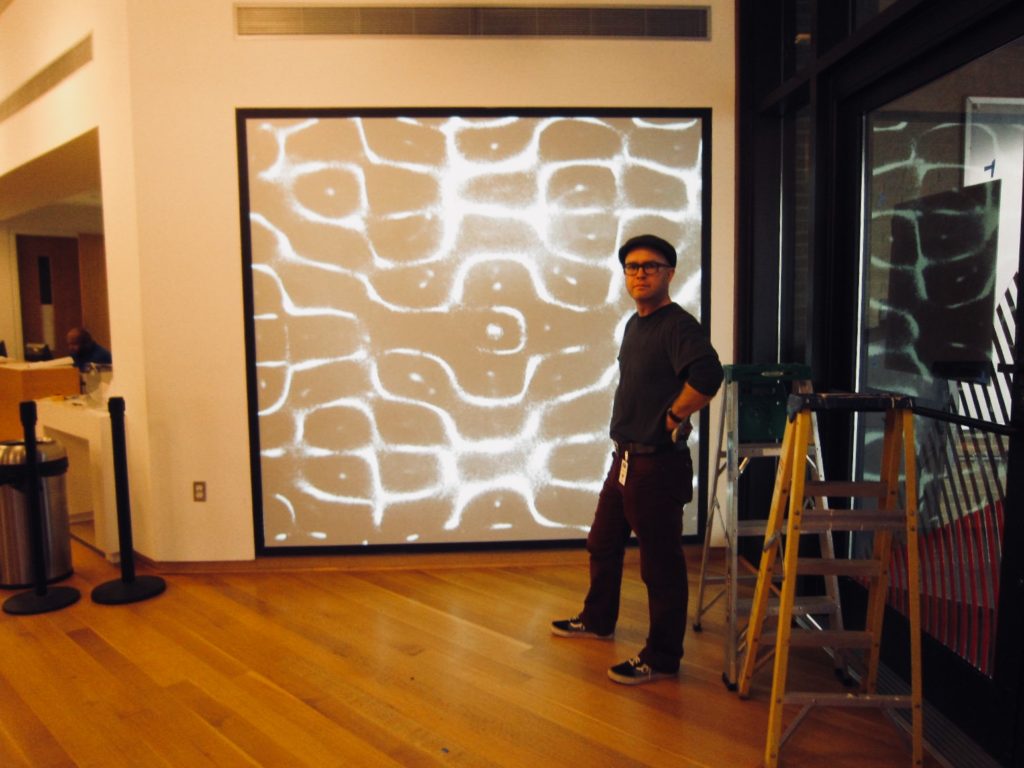
CINNABAR – Filming our Chladni experiment from Heather Gordon on Vimeo.
My hope is that this work be welcoming and establish a frame of mind which is both curious and open, since this will be one of the first works visitors to You Are Here will likely encounter. It is a moment where the stuff of the world, meets our individuals selves, and offers a moment for internal transformation through wonder. Art has the power to transform, and I’m hoping to literally open the front door to that experience as visitors engage with the other works in this immersive exhibition.
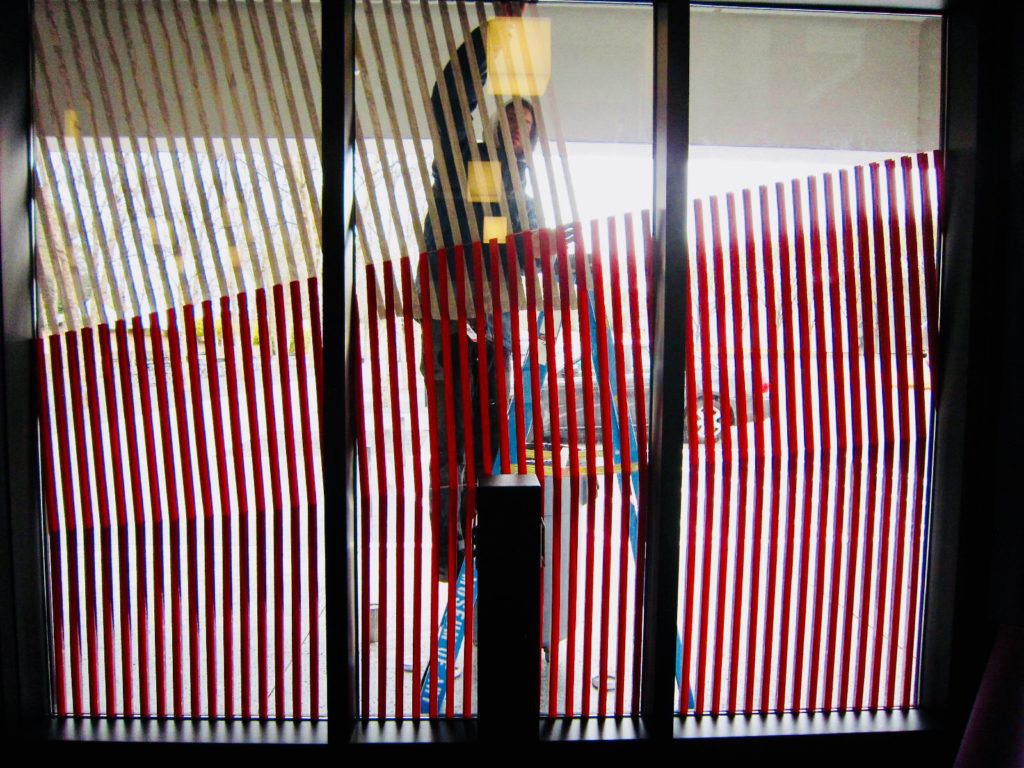

SUPPORTING VISUALS
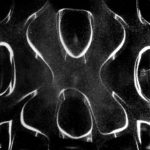 |
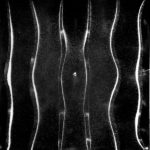 |
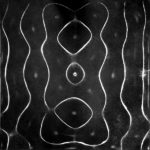 |
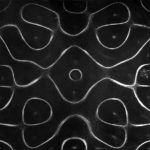 |
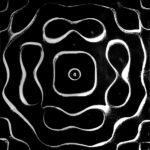 |
 |
Patterns produced by running the Chladni experiment with collaborator and videographer, Alex Maness. The video element of CINNABAR is a forward-reverse time-lapse loop of curvilinear patterns in salt created with a tone generator and an amplifier attached to a 24″ plate of aluminum painted black. Headphones are provided to listen to the frequencies in time with the visual pattern shifts.
This is my origami mapping of the atomic properties of sulfur. The mountain and valley folds help me determine the direction of the tape design to be installed. All angles are measured and included on the drawings used at the site to physically achieve the work.
This the top drawing of the sulfur pattern set. This angle drawing and the tape direction maps sandwich together and can be held up to the light to see the visual relationships easier for taping. There is a front and back design for this entry with three sets of double doors. The angles are drawn onto the glass using a grease pencil, essentially transferring the origami folding pattern to the glass entry. The tapers use the directional maps for interior or exterior to lay the semi-transparent red vinyl tape in fully connecting sections.
The interior facing sections (above). The exterior facing sections (below)
